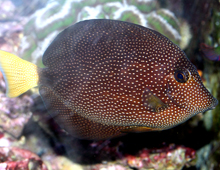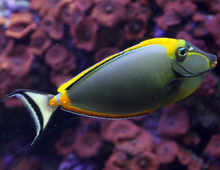
Also known as the Elegant tang, or Indian orangespine unicornfish, the Blond naso is a member of the surgeonfish family. Two bright orange spines can be seen extending from the…
Read More
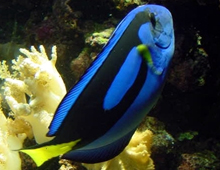
The Blue hippo tang, also known as the Palette tang, or Hepatus tang, is a popular member of the Acathuridae family. This omnivorous fish can be found in small schools…
Read More
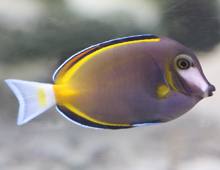
Although a vast number of saltwater fishes flourish in Asian waters, relatively few are restricted to them, otherwise being found also in Australia, East Africa, Hawaii, and other parts of…
Read More
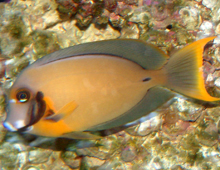
The Chocolate surgeonfish is also known as the Mimic tang because as a juvenile it is yellow or cream colored and is thought to mimic several species of pygmy angelfish.…
Read More
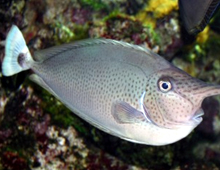
While many surgeonfish draw attention with brilliant colors, this gray fish stands out for its bizarre shape, appearing as if it had a "nose". Feeding on algae and plankton in…
Read More

